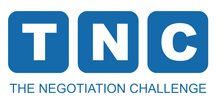Framing in negotiation refers to the strategic presentation and communication of information, issues, or proposals in a way that influences how the other party perceives and interprets them. It involves shaping the context and perspective of the negotiation to guide the other party’s understanding and decision-making process.
Key aspects of framing in negotiation include:
- Emphasis on Salient Points: Framing highlights specific aspects of the negotiation that negotiators want to draw attention to, while downplaying less relevant details.
- Positive or Negative Connotations: Framing can use language and phrasing that evoke positive or negative emotions to influence the other party’s reaction.
- Reference Points: Framing can use reference points or anchors to influence the perception of value or fairness in the negotiation.
- Contextual Information: Framing may provide contextual information that affects how the other party evaluates the options and proposals presented.
- Framing the Problem: Framing the negotiation issue or problem in a particular way can influence the other party’s approach to finding solutions.
- Framing as Gain or Loss: Presenting proposals as potential gains or losses can impact the other party’s willingness to take risks or make concessions.
- Framing in Terms of Interests: Framing issues based on shared interests can foster a cooperative negotiation environment.
- Framing for Long-Term Relationship Building: Framing negotiations with a focus on building a long-term relationship can foster trust and collaboration.
The examples of framing in negotiation inclue:
Framing the Price Proposal:
- Positive Framing: “Our product is competitively priced, offering significant cost savings compared to other alternatives.”
- Negative Framing: “Choosing our competitor’s product may lead to higher expenses and missed opportunities for cost efficiencies.”
Framing Based on Reference Points:
- Anchoring: “We are offering this product at $50 per unit, which is lower than the industry average of $60 per unit.”
- Comparative: “Our proposal offers a 20% discount, while our competitor’s offer is only a 10% discount.”
Framing the Problem and Solutions:
- Positive Outcome: “By implementing our solution, your team will enjoy improved productivity and streamlined workflows.”
- Negative Consequence: “Without addressing this issue, your company may face operational inefficiencies and potential revenue loss.”
Framing in Terms of Interests and Mutual Benefits:
- Interest-Based: “Our proposal focuses on ensuring customer satisfaction, which aligns with your company’s commitment to quality service.”
- Shared Goals: “Both of our organizations aim to reduce environmental impact, and our proposal includes eco-friendly practices.”
Framing for Long-Term Relationship Building:
- Collaborative Tone: “Let’s work together to develop a partnership that benefits both our companies over the long term.”
- Trust-Building: “Transparency and open communication are essential for building a lasting and successful relationship.”
Framing Negotiating Concessions:
- Positive Concession: “As a show of good faith, we’re willing to extend the warranty period on the product at no additional cost.”
- Negative Concession: “We would consider lowering the quality of the materials used to meet your budget constraints.”
Framing the Negotiation Context:
- Cooperative Environment: “We believe that by collaboratively addressing our respective concerns, we can reach an agreement that benefits both parties.”
- Competitive Atmosphere: “Given the high demand for our services, we must carefully evaluate all offers to ensure the best fit.”
It’s important to remember that framing should be done ethically and transparently, focusing on presenting information in a manner that supports understanding and informed decision-making. Negotiators should be mindful of potential biases and seek to maintain a constructive negotiation process where both parties have a clear view of the issues and options being discussed.
Effective framing can impact the negotiation outcome by shaping the perceptions, preferences, and decisions of the parties involved. However, it is essential to use framing ethically and transparently, as manipulative or deceptive framing can harm the negotiation process and damage the relationship between negotiators. By understanding the power of framing and using it strategically, negotiators can create a negotiation context that supports their objectives and encourages mutually beneficial agreements.
